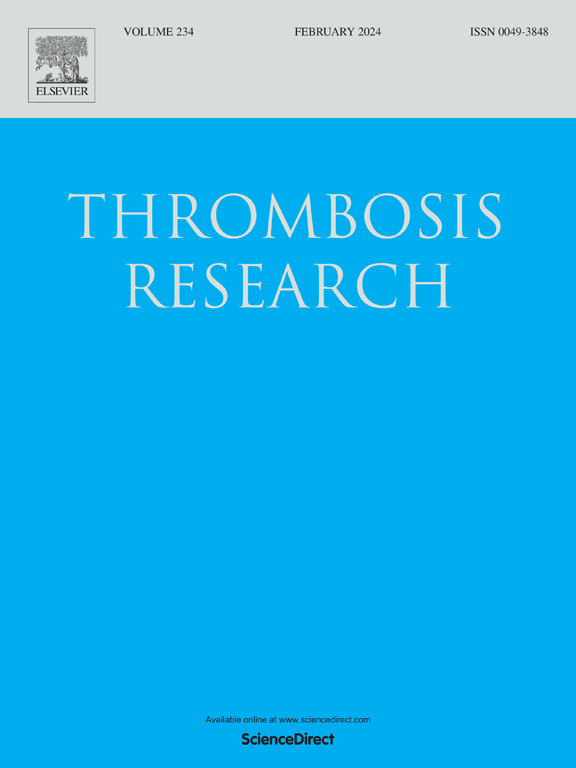Analysis of clinical manifestations and molecular pathogenesis of six patients with hereditary blood coagulation factor VII deficiency
IF 3.7
3区 医学
Q1 HEMATOLOGY
引用次数: 0
Abstract
Background
Hereditary blood coagulation factor VII (FVII) deficiency is a rare hemorrhagic disorder inherited in an autosomal recessive pattern, involving variants in the gene encoding FVII (F7). The sites and types of F7 mutations could influence the coagulation activity of plasma FVII (FVII: C) and the severity of hemorrhage symptoms. However, the specific molecular mechanisms of FVII deficiency are still unclear.
Objective
To analyze clinical manifestations and coagulation functions of six patients of hereditary FVII deficiency and explore specific molecular mechanisms of the disease.
Methods
We detected coagulation functions including prothrombin time (PT), activated partial thromboplastin time (APTT), PT mixing study and FVII: C. Then genomic DNA of six patients was sequenced through whole exome sequencing (WES). Furthermore, we analyzed and predicted conservatism of the amino acid mutation sites, pathogenicity of mutations and structures of the mutated proteins by bioinformatics tools.
Results
Five patients presented as asymptomatic while only one female experiencing intermittent epistaxis. PT was prolonged and corrected to reference range, and FVII: C was significantly decreased in all patients. Nine mutations were identified, of which three (c.1261delA, c.362G>A and c.227A>G) were reported for the first time. The mutation (c.1261delA) triggered nonsense-mediated mRNA decay (NMD) mechanism, resulting in degradation of abnormal mRNA. The mutation (c.362G>A) might disrupt formation of disulfide bond, affecting normal folding of functional domain. Moreover, protein modeling revealed the formation of a new hydrogen bond. Using ProtScale to analyze the hydrophobicity of the mutation (c.227A>G), it was clear that hydrophobicity of amino acids was enhanced.
Conclusion
We have identified three novel mutations and performed analysis that might illuminate the molecular pathogenesis of hereditary coagulation FVII deficiency.
求助全文
约1分钟内获得全文
求助全文
来源期刊

Thrombosis research
医学-外周血管病
CiteScore
14.60
自引率
4.00%
发文量
364
审稿时长
31 days
期刊介绍:
Thrombosis Research is an international journal dedicated to the swift dissemination of new information on thrombosis, hemostasis, and vascular biology, aimed at advancing both science and clinical care. The journal publishes peer-reviewed original research, reviews, editorials, opinions, and critiques, covering both basic and clinical studies. Priority is given to research that promises novel approaches in the diagnosis, therapy, prognosis, and prevention of thrombotic and hemorrhagic diseases.
 求助内容:
求助内容: 应助结果提醒方式:
应助结果提醒方式:


